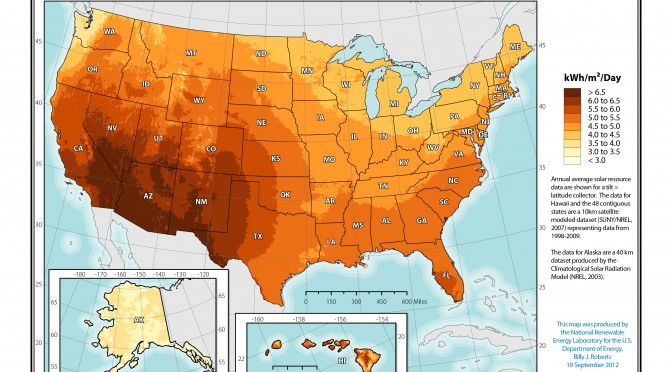Solar Energy in the United States: A Decade of Record Growth, released today by the Solar Energy Industries Association (SEIA).
From the end of 2004 through the end of 2014, the deployment of solar energy in the United States grew at an unprecedented rate, according to a new video report, Solar Energy in the United States: A Decade of Record Growth, released today by the Solar Energy Industries Association (SEIA).
According to a detailed SEIA analysis, in 2004, there were 500 megawatts (MW) of solar energy installed nationwide. But by the end of 2014, there were 20,000 MW – enough to power more than 4 million homes – with 97 percent of that capacity added after passage of the solar Investment Tax Credit (ITC). Over the same time period, the cumulative investment in installed solar installations in the U.S. soared from $2.6 billion to $71.1 billion.
“Our new video report is not only filled with important information, but it tells solar energy’s tremendous success story in a fun and visually-interesting way,” said SEIA President and CEO Rhone Resch. “Did you know that in 2004 only two states had 10 MW of installed solar capacity, yet a decade later, 35 states had topped that threshold – and 20 states had more than 100 MW? But here’s the best news of all: we expect to double our total capacity in the next two years alone.”
Here are some other key takeaways from SEIA’s analysis:
* In 2004, approximately 15,500 homes had solar photovoltaic (PV) installations across the U.S. Through the end of 2014, that number had grown to 600,000.
* From 2004 to 2014, the number of utility-scale solar projects in the U.S. – both PV and concentrated solar power (CSP) – increased by more than 10-fold, growing from 100 projects to nearly 1,100 projects spread across 30 states.
* From 2004 to 2014, the amount of installed utility-scale solar capacity in the U.S. increased by more than 30 times, from 365 MW to 11,440 MW.
* In 2004, the U.S. had 58 MW of total solar capacity. In 2014, 14 states installed that much solar or more, with a record total 7,000 MW coming online nationwide.
* Over the 10-year period studied, the average price of an installed residential PV system dropped by more than 60 percent, and utility-scale prices plummeted by more than 73 percent.
* In 2014, for the first time in history, each of the three major U.S. market segments – utility-scale, commercial and residential – all installed more than 1 gigawatt (GW) of solar PV.
“Most importantly, the tremendous growth of solar energy in the United States has translated into tens of thousands of new jobs,” Resch said. “In 2004, there were less than 20,000 people at work in the U.S. solar industry. Through 2014, that number had soared to 174,000 – with new jobs being added every day. Without question, effective, forward-looking public policies, like the solar ITC, Net Energy Metering (NEM) and Renewable Portfolio Standards (RPS), are helping to drive solar energy’s remarkable growth. Because of these polices, we should be generating enough clean electricity to power more than 8 million American homes by the end of 2016, benefitting both our economy and environment, while providing homeowners, businesses, schools, nonprofits and government officials at all levels with real choices in how they meet their electricity needs in the future.”


